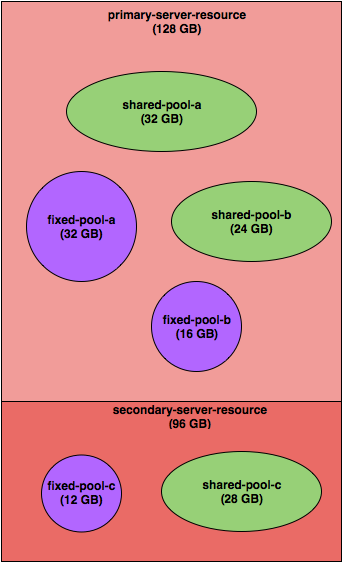Clustering Concepts
In this section we discuss some Terracotta clustering terms and concepts that you need to understand before creating cache managers and caches with clustering support.
Server off-heap resource
Server off-heap resources are storage resources defined at the server. Caches can reserve a storage area for their cluster tiers within these server off-heap resources.
Cluster Tier Manager
The Ehcache Cluster Tier Manager is the server-side component that gives clustering capabilities to a cache manager. Cache managers connect to it to get access to the server's storage resources so that the clustered tiers of caches defined in them can consume those resources. An Ehcache cluster tier manager at the server side is identified by a unique identifier. Using the unique identifier of any given cluster tier manager, multiple cache managers can connect to the same cluster tier manager in order to share cache data. The cluster tier manager is also responsible for managing the storage of the cluster tier of caches, with the following different options.
Dedicated pool
Dedicated pools are a fixed-amount of storage pools allocated to the cluster tiers of caches. A dedicated amount of storage is allocated directly from server off-heap resources to these pools. And this storage space is used exclusively by a given cluster tier.
Shared pool
Shared pools are also fixed-amount storage pools, but can be shared by the cluster tiers of multiple caches. As in the case of dedicated pools, shared pools are also carved out from server off-heap resources. The storage available in these shared pools is strictly shared. In other words, no cluster tier can ask for a fixed-amount of storage from a shared pool.
Sharing of storage via shared pools does not mean that the data is shared. That is, if two caches are using a shared pool as their clustered tier, the data of each cache is still isolated but the underlying storage is shared. Consequently, when resource capacity is reached and triggers eviction, the evicted mapping can come from any of the cluster tiers sharing the pool.
Here is a pictorial representation of the concepts explained above:
Illustration showing resources of two caches that are separated while being from the same shared pool.

